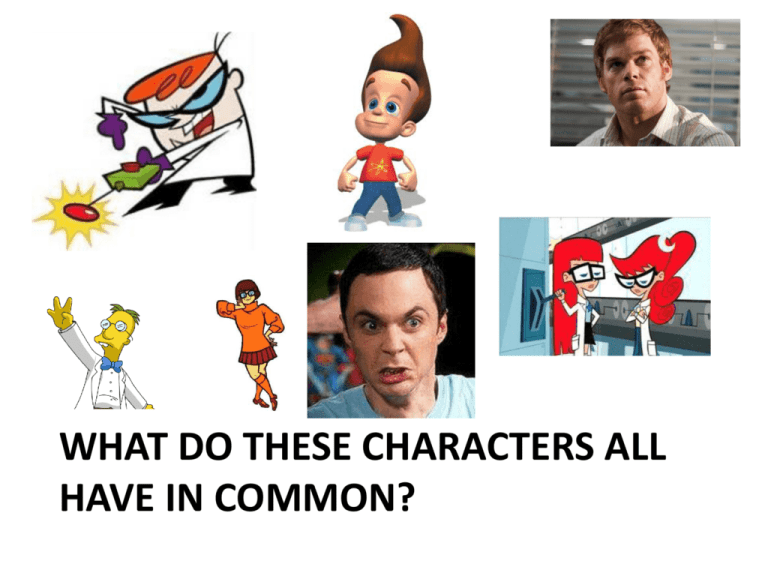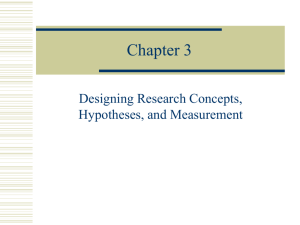What do these characters all have in common?
advertisement

WHAT DO THESE CHARACTERS ALL HAVE IN COMMON? Research Methods The process by which we produce new knowledge or deepen our understanding of a topic or issue. Hindsight Bias • The tendency to believe, after learning the outcome, that you knew it all along. Monday Morning Quarterbacking!!! Overconfidence • We tend to think we know more than we do. • 82% of U.S. drivers consider themselves to be in the top 30% of their group in terms of safety. • 81% of new business owners felt they had an excellent chance of their businesses succeeding. When asked about the success of their peers, the answer was only 39%. (Now that's overconfidence!!!) Scientific Method (SM) • Need empirical ev b/c we’re susceptible to biases • Evidence must come from observation, not from thoughts/guesses • SM: “checklist” search for knowledge in an objective & unbiased manner The first step is…. To form an operational definition. • Explain what they are measuring. • Be specific. Once we understand what we are measuring we have to make sure it is both reliable and valid. Lets say you think that giving chocolate to a girl makes them feel more romantic. • What do you mean by chocolate? • What do you mean by romantic? Breakdown of SM • Define question • Observe: gather info & resources • Form hypothesis • Test hypothesis through experiment & data collection • Analyze data • Interpret data & draw conclusions new hypothesis • Publish results • Retest (frequently done by other scientists) Improved Hypotheses… • Drinking 8 oz. of [type] coffee a day at 7 a.m. will make someone [who?] alert & ready for the day ahead [?]. Being alert = being attentive to surroundings [what?] & getting your work done [how much/what kind?]. • Drinking 8 oz. of Dunkin’ Donuts caffeinated coffee every day at 7 a.m. increases high school students’ heart rates. Reliability What kinds of thing are reliable in your life? Accuracy or consistency If you use the method the same way in the same situation, do you get the same results? • Test-retest • To make it replicable Did more than one person record the data (do they agree)? • Inter-rater reliability Why do you want your research to be reliable? Internal Validity (V) • Validity = Accuracy • Asks whether the research does what it claims to do (a.k.a. Face Validity) • Are you testing what you mean to test? • Internal = related to the study itself • Validity problems: – In your notebook, define “problem-focused coping.” Does this prove what you’ve learned so far? Lacks face validity (doesn’t test what you learned) Activity A • Version 1: Pick someone on the other side of the room to draw. Your work is for your eyes only. (2 min) • Version 2: Fold the paper and draw a new version, now observed by the person you chose… (2 min) Demand Characteristics • Subjects in an experiment act differently knowing they’re in an experiment, which changes test validity – Hawthorne effect: when subjects know the study’s goal & act accordingly; ARTIFICIALLY POSITIVE RESULTS – Driver’s license test – Started the field of organizational psych (how employees work better) – Screw-you effect: subjects know the goal & don’t care Ecological Validity Does the study represent real life? Can we apply the results to the rest of the population? • If ppl know it’s fake, will act differently • Masters & Johnson (studying sex in labs…who signs up for that?) • Most research = on college students; not externally valid We produce new knowledge or deepen our understanding of a topic or issue all the time…. • Examples…… • So in a way we already are research scientists. • The only real difference is that scientists must show that their research is bases on empirical evidence.






